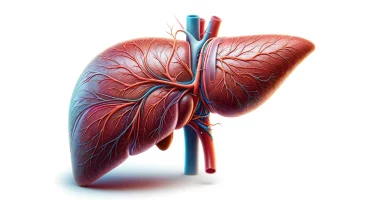Prostate cancer – the disease explanation
What is prostate cancer?
Prostate cancer is the type of cancer that occurs in the prostate (a small walnut-shaped gland in men that produces the seminal fluid). Prostate cancer is one of the most frequently diagnosed types of cancer.
The exact causes of prostate cancer are not known but some risk factors significantly increase the risk of its development.
Prostate cancer risk factors
- Age
Prostate cancer primarily affects older men (> 50% of patients with prostate cancer are men over the age of 70).1
Other factors increasing the risk of prostate cancer include:
- Race
Black people have a greater risk of prostate cancer than people of other races. In that population, prostate cancer is also more likely to be aggressive or advanced. The reasons have not yet been determined. - Family history
The risk of prostate cancer is higher if a blood relative, like a parent or grandparent, has been diagnosed with the disease. Also, the risk of prostate cancer may be higher if there is a family history of breast cancer genes (BRCA1 or BRCA2). - Obesity
Obesity is linked to a higher risk of prostate cancer. In obese people, the cancer is more likely to be aggressive and more likely to return after first-line treatment.
Open to find how you can reduce your risk of prostate cancer.
You can significantly reduce the risk of prostate cancer if you:
- Choose a healthy diet full of vegetables high in fiber
It has yet to be discussed whether diet can prevent prostate cancer. However, a healthy diet with various fruits and vegetables can improve overall health. - Choose healthy foods over supplements
No studies have shown that supplements play a role in reducing the risk of prostate cancer. Instead, choosing foods rich in vitamins and minerals can maintain your health. - Exercise as many days a week as you can
Exercise improves overall health, helps maintain weight, and improves mood. Try to exercise most days of the week. If you’re new to exercise, start slowly and work up to more exercise time each day. - Maintain a healthy weight
If your current weight is within normal limits, work to maintain it by choosing a healthy diet and exercising most days of the week. If you need to lose weight, exercise more and reduce the calories you eat daily. Ask your doctor for help creating a plan for healthy weight loss. - Talk to your doctor about increased risk of prostate cancer
If you have a very high risk of prostate cancer, you and your doctor may consider medications or other treatments to reduce the risk. Some studies suggest that taking 5-alpha reductase inhibitors, including finasteride and dutasteride, may reduce the overall risk of prostate cancer developing. These drugs are used to control prostate gland enlargement and hair loss. However, some evidence indicates that people taking these medications may have an increased risk of getting a more severe form of prostate cancer (high-grade prostate cancer). If you’re concerned about your risk of developing prostate cancer, consult your doctor.
It is important to know that many prostate cancers grow slowly and do not spread outside the prostate gland! That is why prostate cancer often has no symptoms at the early stages.
Prostate cancer is often a slow-growing cancer with no symptoms in its early stages.
Unfortunately, some aggressive forms of prostate cancers develop rapidly.
Prostate cancer classifications
There are different prostate cancer classifications based on its location, size, aggressiveness, and the extent of its spread.
According to the size and spreading, prostate cancer can be classified as:
Localized prostate cancer
This prostate cancer is localized within the prostate gland and does not spread anywhere else in the body. Localized prostate cancer is also divided into three risk groups, depending on how the cancer will grow and spread:
- Low-risk prostate cancer: minimal/ no risk of growing or spreading for many years;
- Intermediate-risk prostate cancer: minimal risk of growing or spreading for a few years;
- High-risk prostate cancer: might grow or spread within a few years.
Locally advanced prostate cancer
This cancer spreads beyond the prostate gland, for example, into the seminal vesicles, and nearby organs like the rectum or lymph nodes.
Metastatic prostate cancer
Metastatic prostate cancer is spread far beyond the prostate gland and may appear in other parts of the body (metastases). Prostate cancer cells can be found anywhere, but most commonly, cancer metastases occur in bones, lymph nodes, or the liver.
Prostate cancer grades shows how similar or different the cancer cells are compared to normal cells, providing insight into the cancer’s aggressiveness:
- Grades 1-2 consist of cells that closely resemble normal prostate cells;
- Grades 3-4 are more clearly cancerous cells;
- Grade 5 includes the most abnormal and aggressive cancer cells.
To determine the grade, pathologists need to review the overall scores from multiple cell samples (biopsies):
- Grade 1: Score of 6 or less;
- Grades 2 and 3: Score of 7;
- Grade 4: Score of 8;
- Grade 5: Scores ranging from 9 to 10.
This information helps to understand how quickly the cancer is likely to grow and spread, and to choose the best treatment.
Treatment options are different for localized, locally advanced, and metastatic prostate cancer. Other clinical situations like cancer recurrence or resistance are also important to take into account.
Prostate cancer symptoms
As the cancer becomes more advanced, the following symptoms and signs may occur:
- trouble urinating;
- passing urine more frequently during the day or night;
- difficulty passing urine;
- urgency to pass urine;
- decreased force in the stream of urine;
- blood in the urine or semen;
- erection problems (dysfunction);
- unexplained weight loss;
- bone pain.
“You should see your doctor if you experience any of these symptoms. However, it is important to remember that these symptoms are common in people who do not have prostate cancer; they may also be caused by other conditions.
ESMO recommends
For example, benign prostatic hyperplasia is caused by enlargement of the prostate gland. Benign prostatic hyperplasia does not usually develop into cancer, but can have similar symptoms to prostate cancer as a result of the enlarged prostate gland pressing on the urethra”.2
Prostate cancer screening and diagnosis
It is crucial to diagnose prostate cancer at an early stage while it is still confined to the prostate gland, as this significantly improves the chances of successful treatment.
For screening, patients may be advised to undergo a prostate-specific antigen (PSA) test to measure PSA levels in the blood*.
* PSA test alone cannot confirm the presence of prostate cancer. A clinical examination and additional tests are needed for diagnosis.
In some countries, the PSA test is recommended for all men over 50. In other countries, it is recommended only for men who have additional risks and clinical symptoms.
Diagnosis of prostate cancer is based on the results of some examinations and tests including:
Digital rectal examination
A clinical examination of the prostate gland through the rectum. It is provided to feel the prostate gland and check for any abnormalities.
PSA blood test
The PSA blood test measures the level of prostate-specific antigen in the blood.
These two tests can indicate the possible presence of prostate cancer. Nevertheless, further tests are needed for a correct diagnosis.
Magnetic resonance imaging (MRI)
According to the digital rectal examination and PSA test results, a patient may be recommended to undergo MRI.3 The MRI scan can show abnormalities in the prostate gland and assist in determining whether a biopsy is needed, as well as where to perform it.
Prostate biopsy
A prostate biopsy involves taking tissue samples from the prostate. This procedure may be done under general or local anaesthesia by transperineal or transrectal approaches. The biopsy is always provided under ultrasound control. Prostate gland tissue samples are taken to detect cancer cells and confirm prostate cancer diagnosis.
Prostate cancer treatment
Treatment options for prostate cancer include4:
- active surveillance (active monitoring without treating).
For some patients, especially older men with slow-growing prostate cancer, treatment may not be appropriate or necessary; - surgery;
- radiotherapy;
- hormone therapy (e.g. androgen deprivation therapy, anti-androgens or testosterone synthesis blocker);
- chemotherapy;
- targeted therapy.
Treatment for prostate cancer depends on the size, location and stage of the tumor.
More than 900 clinics worldwide treating prostate cancer are here: https://doctor.global/results/diseases/prostate-cancer.
References:
- Ferlay J, Ervik M, Lam F, et al. Global cancer observatory: Cancer Today. Lyon, France: International Agency for Research on Cancer 2020.
- ESMO recommendations for patients
- Parker C, Castro E, Fizazi K, et al. ESMO Guidelines Committee. Prostate cancer: ESMO Clinical Practice Guidelines for diagnosis, treatment and follow-up. Ann Oncol 2020;31(9):1119–1134.
- Prostate cancer: ESMO Clinical Practice Guidelines for diagnosis, treatment and follow-up. Approved by the ESMO Guidelines Committee: February 2002, last update June 2020. Ann Oncol. 2015;26(suppl 5):v66-v77.
You can also see the overview of prostate cancer in the video hereunder:
You can also engage in more prostate cancer treatment details: https://doctor.global/blog/prostate-cancer-treatment/.


